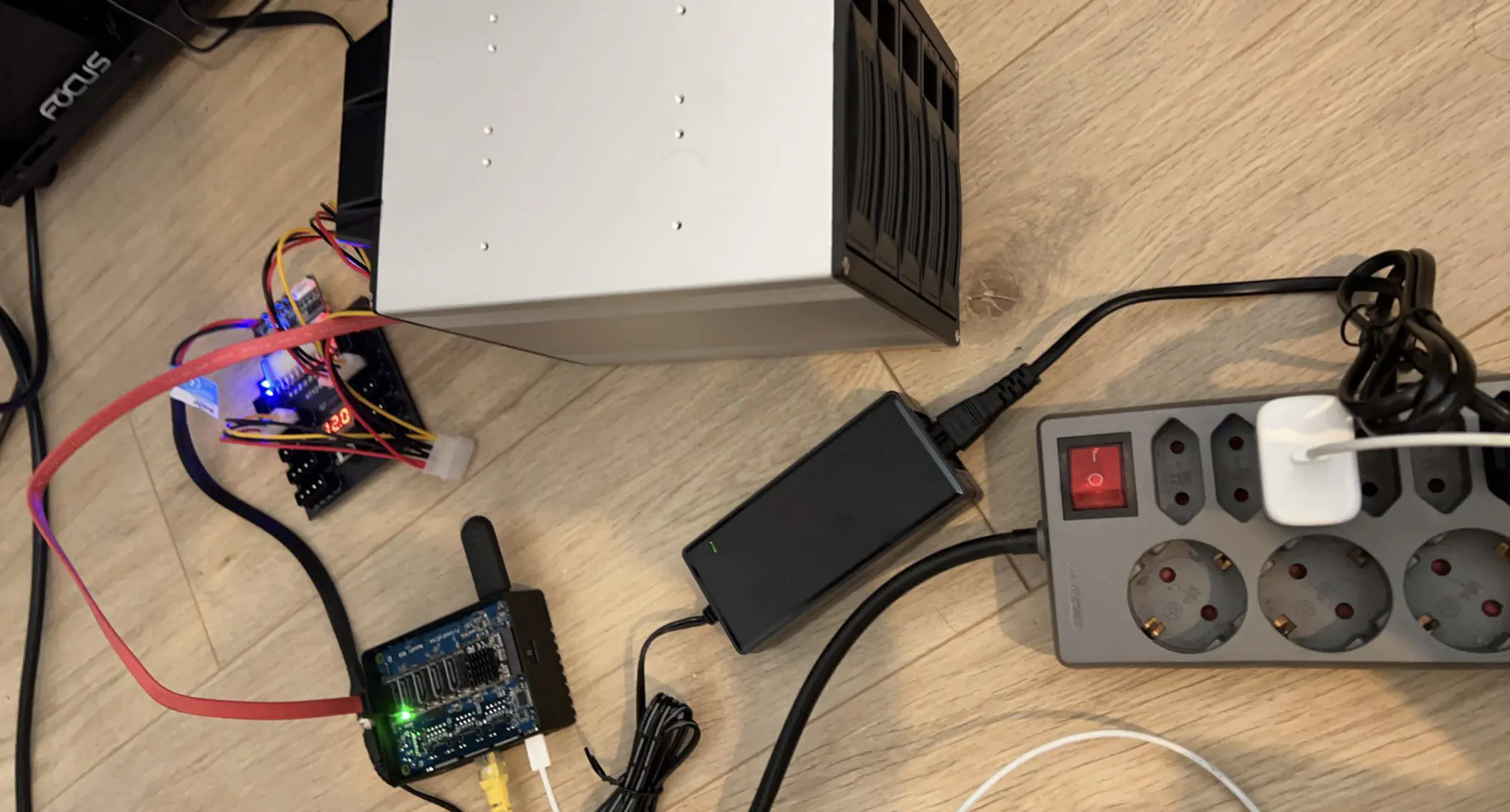How I Optimized My Homeserver With Arm
Estimated reading time: 4 minutes
This article was originally published on my Medium on the 3rd of May, 2023
 How it looked on my floor while I was testing things
How it looked on my floor while I was testing things
My journey starts with the fact that I live in Germany a country that had it’s energy prices sky rocket and as a student living on my own I wanted to minimize my always on devices. What I had was my old computer running an i5–6600k with 16GB Ram which had a power draw of 50–60w idle and above 100w doing heavier File Transfers and so on. At that point I’ve seen lots of videos around Raspberry Pi’s but its rather slow CPU and lack of PCI-E lanes (not speaking of it’s price which went through the roof too) has lead me to the world of chinese SBC’s. One in particular stood out to me which seemingly covered all of my wishes. The FriendlyElec NanoPi R5S with it’s 2.5GBe Ports and an PCI-E based M.2 slot on the back. It was a massive shot in the dark but 118€ shipped (in under 2 weeks) with a case and 4GB of Ram on AliExpress I was up to the challenge. Coupled with a JMB585 M.2 to 5x Sata Port adapter (30€ Amazon), a chinese PSU Power Board that takes 24pin to 8x 4-Pin Molex (20€ Amazon), a Pico PSU rated for 160w (20€ Ebay) and the part that made it a NAS the Inter-Tech ST-5255 (65€) a 5 Bay Hard drive enclosure which we can connect to the Power Board and Sata Adapter. To solve the issue of getting power to the Hard drive enclosure I just got two molex Y cables and ignored the male side.
Now with the Hardware sourced for around 250€ (there were coupons available so the final cost was a little lower) I had a 5-Bay Nas with 2x 2.5GBe Networking. That was at a time around August 2022 when there was no thing as the Storaxa or it’s NAS Mainboard based on the N5105/N6005 were available especially in that price range given the features and power draw goal.
To the software. At that time there weren’t Debian 11 images without a Desktop environment (which surprisingly changed and FriendlyElec learned and listened to customer Feedback), any Armbian images available or so I thought. Meet dietpi.com an amazing project focused on giving single board computers a lightweight CLI-Only Operating System. You might ask why can’t I just use any given Linux OS from the manufacturer (at the time) that was because I came across another awesome project called OpenMediaVault which gives users a rather simple WebGui for our NAS and to our luck is ARM compatible if you have a Debian OS without Desktop Environment.
So now after connecting and setting everything up I had a working 2.5GBe Nas with 5 hard drive bays for less than 300€ but how much power does it now save compared to the x86 solution I had before. The answer is over 91% for the SBC alone with around 5w of power consumption and 10w fully loaded (compared to 60w idle and 100+ loaded). I’m running 2 hard drives from before which use together around 7w each or up to 20w together. The numbers sound amazing but how is the performance well it’s not quite 2.5Gbit but -I’m getting around 150–200mb/s or 1.2–1.6Gbit with Jumbo Frames enabled for File Transfers-. Edit September-2023: Stable 200mb/s now The system uses usually around 2Gigs of Ram while also running Docker with Portainer for my HomeAssistant (which has a ZigBee USB Dongle passed through), Plex (no live encoding) and other little projects.
All in all it was a success and a fun project giving me some sleepless nights getting everything properly working and it has been since then until at least now in April 2023. In the future I do wanna test it with a Sata SSD connected too but for now that is my little HomeServer running on ARM (which still needs a case to put it all into one but learning 3D modelling turned out to be a little more complicated). If you have any questions about this project please leave a comment and I hope I can answer them!